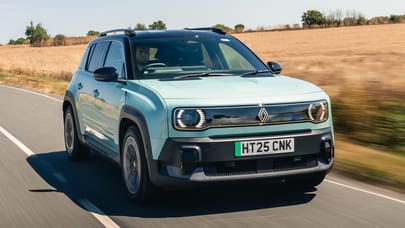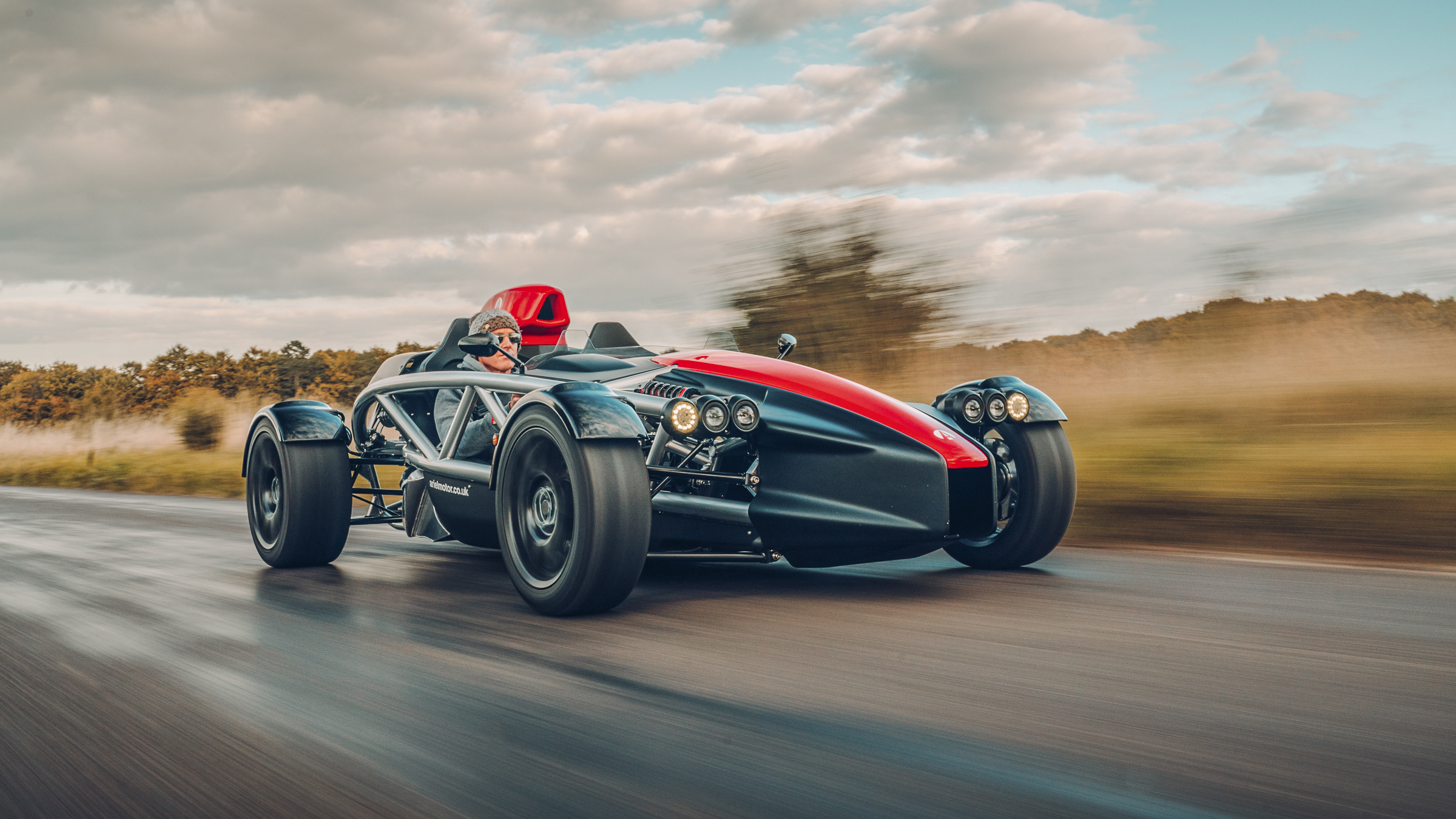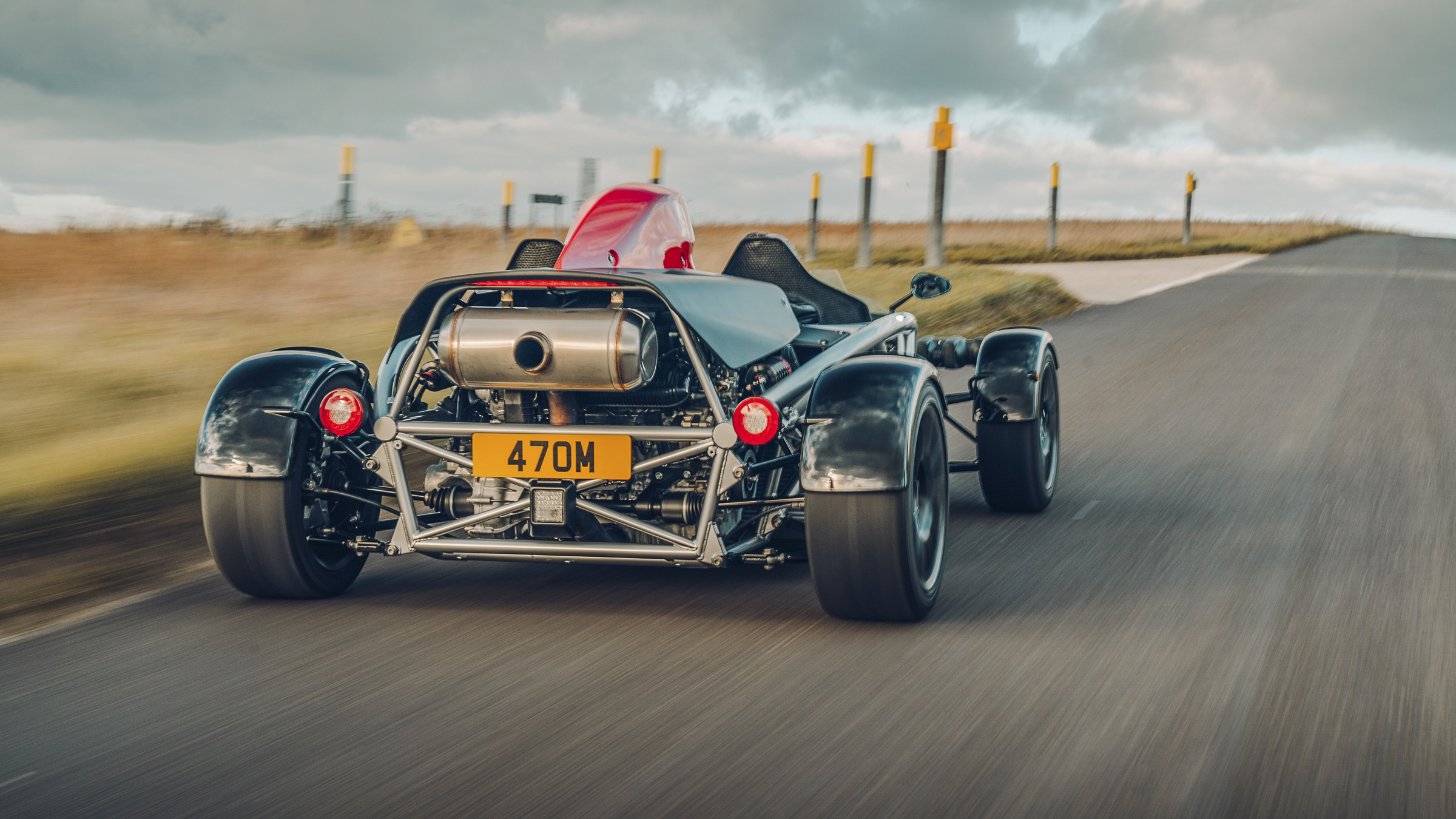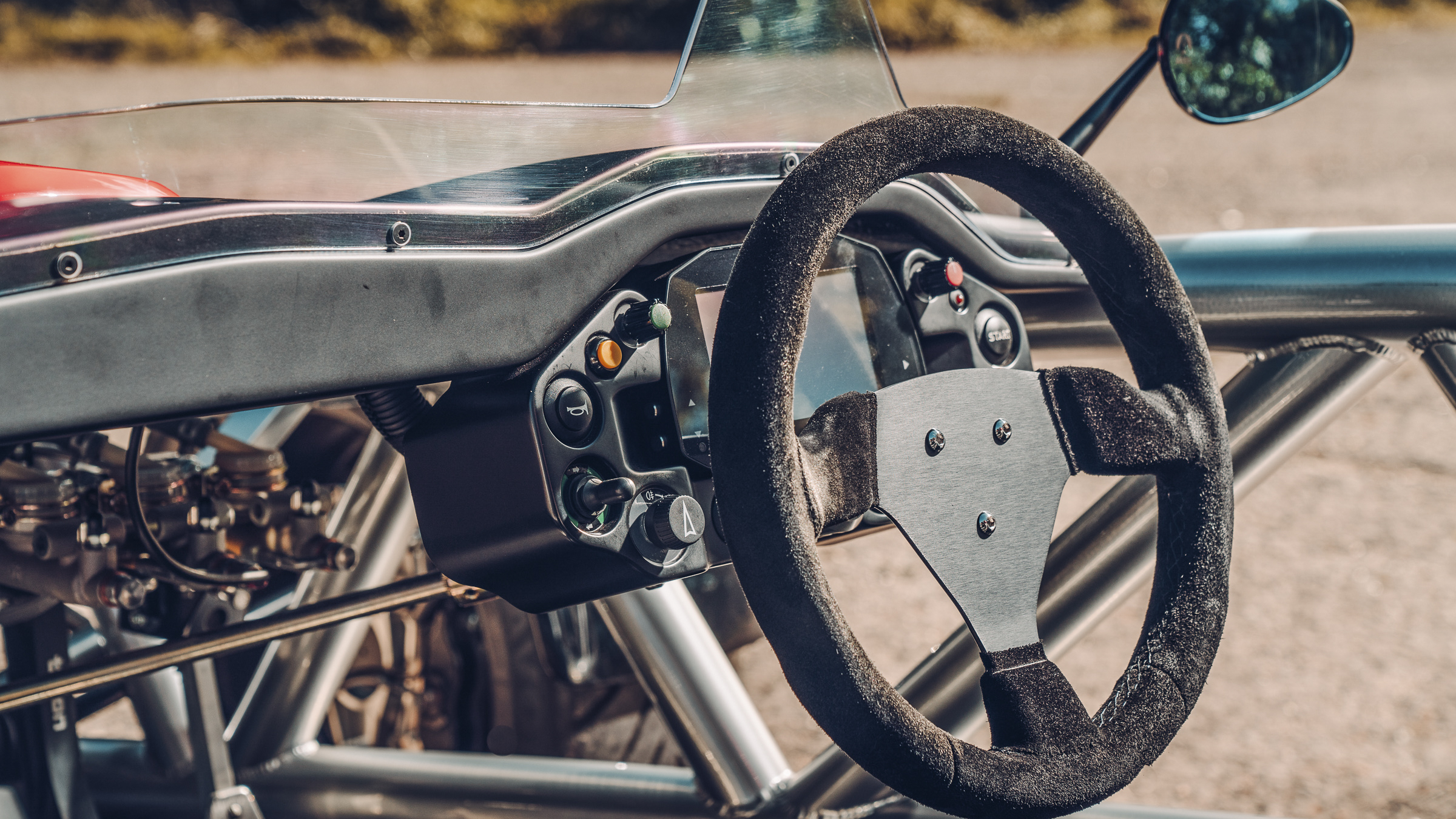
Ariel Atom 4 review
Driving
What is it like to drive?
I’m not going to talk about lag just yet, because there’s a bigger change to the way this drives than the addition of turbocharging. It’s the calmness and placidity of the new chassis and suspension. The old Atom, especially in supercharged guise, was, to put it mildly, a lively device. The engine dominated, the rest tried to keep up, tried to contain the explosive energy. This made it tremendously exciting – your bravery governed your progress. But also somewhat nerve-wracking.
The Atom has now grown up and gained maturity. Which sounds ridiculous for a car with no windscreen, doors or roof. But this is a car which can now make largely unflappable and easy progress even on the bumpiest, trickiest of roads. The ride is supple, able to skate over potholes and bumps without deflecting the car from its course. It’s… comfortable. There’s barely any tremor and fidget from the frame, it stays level around corners and under braking and acceleration. No hint of it getting fighty or light, it’s planted, controlled and capable.
With the worst of the road surface filtered out, you’re more relaxed and can concentrate on the driving. This is just as well, because the Atom 4 is capable of generating colossal speed in very short timeframes. So, the question of lag. Is it an issue? Slightly, yes. Not in terms of response, because even before the turbo comes in, the 2.0-litre only has 595kg to push against, so you feel it respond, and if you keep the revs high the delay is vanishingly small.
But in practice we used the mid-range and there the engine is half a heartbeat behind the throttle. You put in a demand, the engine surges up to meet it, but the torque wave is slightly behind and slightly blunt. It doesn’t quite have the millimetric precision that a naturally aspirated or supercharged engine delivers. This means you need to keep the engine on the boil if you want to get immediate response at the apex of a corner. No hardship, just drop a gear.
But at least now you have options. You can drive at the power peak, or you can sit back and let the torque thrust you along – something it is ridiculously effective at. It’s hard to judge accurately because the current rev counter is quite small (it’s being changed for production), but let’s say the handover is about 4,500rpm. Stay below that and you’ve got this generous, well mannered motor. Above it, the gloves are off. The performance is frankly ridiculous. It’s supercar fast, Ferrari 488 or McLaren 720S pace, but with extra outdoors astonishment. This must be every bit as fast as an outgoing 3.5R (a car we timed at 2.8 to 60mph and 5.8 to 100mph), but instead of that high pitched scream, there’s now this dirty great Darth Vader inhale from next to your left ear. You can play tunes with the intake as the turbo sucks and squeals, but it’s also worth keeping a set of earplugs in one of those storage areas under the nose.
Two things about this performance though. The old car was self-limiting – the suspension got scary quite quickly and aerodynamics limited top end shove. Neither of those is the case any more. Which means the numbers on the dash get big very quickly, and you feel comfortable with them. Not good for licence retention. As we keep saying, more speed, more capability is the way all sports cars are going, we just didn’t think it would apply to lightweights.
Not that the Atom 4 is short of feel or finesse. It’s just that a filtering process has occurred. Yes, the steering now transmits fewer signals, it doesn’t wriggle and kickback as much. But it’s still wonderfully precise and the signals you get are the ones you need, the ones the suspension has decided had to be transmitted. The handling balance still errs towards understeer and despite Ariel’s best efforts, the Atom isn’t quite 911-esque in its ability to disguise the engine’s position – it might have a longer wheelbase, but the weight distribution is still 35:65.
Overall it’s so much more friendly and adjustable now – back off mid-corner and the tail might start to move slightly, but it’s a calm movement. Similarly if you get wheelspin, it’s less spiky. Did I enjoy it? Absolutely. The thrills maybe be slightly harder to come by but only because the adrenaline and jeopardy have been toned down. Crucially, it’s fun and usable in a much wider range of situations than the old one. Such as...
It’s wonderfully tractable around town. It’ll happily pull away in second and if you turn the boost knob down to 1 (for a paltry 220bhp), you get a lot less noise from the intake. No throttle snatch or engine lumpiness, just pure professionalism. Because it rides well, there’s masses of torque and your head isn’t pummelled nearly as badly as before, it’s comparatively comfortable to do distance in. Unless it rains. You will be able to order a full windscreen, but the management of airflow over the small deflector is really good, aided by the now more reclined seat angle. The gearchange is still being finalised. To me it felt slightly loose in the gate, but the knob is being changed for a shorter, thinner one. As with everything Ariel does, this has been agonised over.
Featured

Trending this week
- Car Review
Renault Clio






